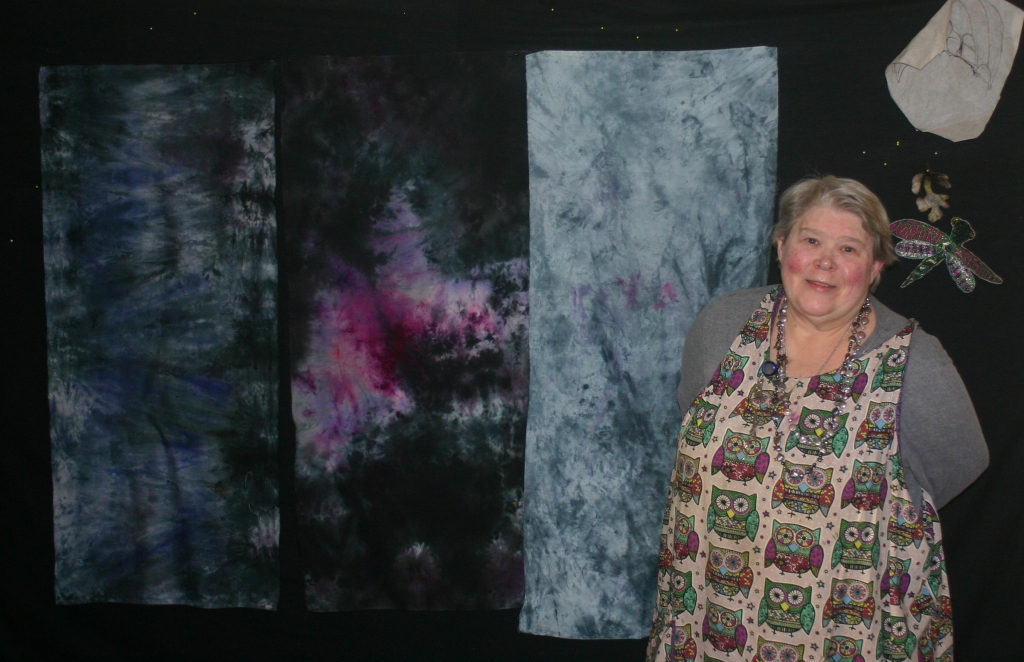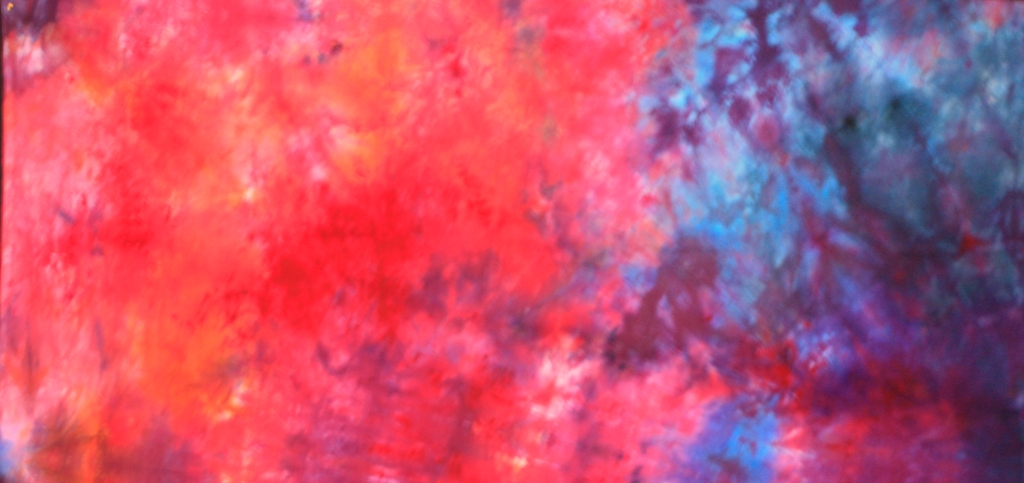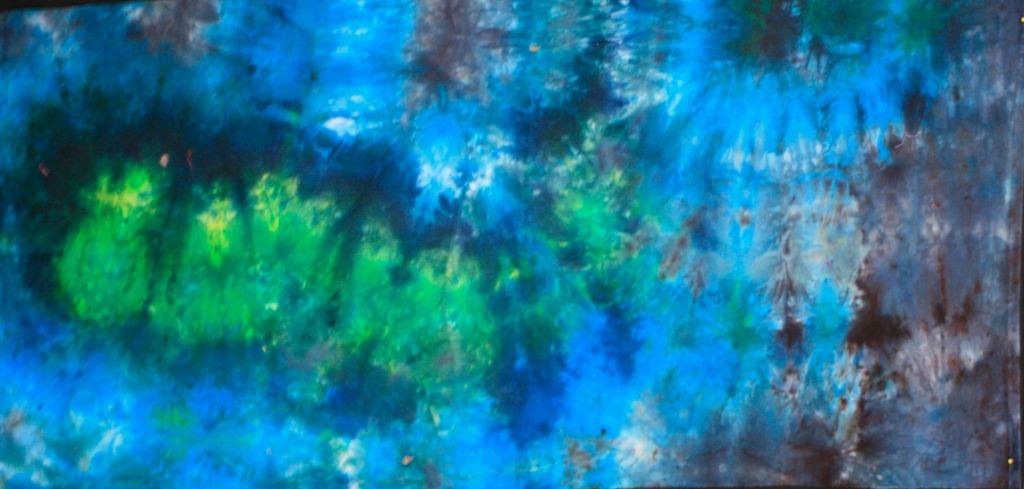
I sat down yesterday and mixed the colors for dyeing. It felt like I was sitting in a circle of old friends. Scarlet, sitting next to Fuschia who had just made friends with a new color Dragonfruit, and was waving across the color wheel to the Lemon/lime.
I’m dyeing fabric today in preparation for surgery. If I’m going to have to go through heart surgery, there better be a really big pony after all the poop. So a pile of fresh fabric waiting for me is sensible. It fills the time while I’m waiting and it leaves me with a lovely pile of fabric to dream about until I can sew again. It’s good preparation I think. And a good way to fill the waiting time.
I started dyeing fabric at thirteen. I found a book in the library that blew me out of the water, with it’s papercut illustrations. The Emperor and the Kite, by Jane Yoland used paper in variegated colors that resembled the hand dye I still do. I wanted to work with the technique and it never occured to me to dye or paint paper. I dyed fabric with Rit.
This all happened in the kitchen sink and my father who was the major cook in the house had opinions about it. My father was almost non-verbal, but he looked like I’d kicked his puppy when he saw the kitchen after I was done. He unblocked the sink, scrubbed it down and said nothing. He always understood the passion around projects. He had his own, and he often helped with mine.
But it set something in me. I don’t really want colors that stand apart from each other .I want them to mingle and to dance within the fabric itself. I’ve been dyeing fabric in some form ever since.
Colors are about relationships. They have relationships with each other that depend on how they are formulated. I am not a dye master. Or someone who can responsibly measure dye and mix it reliably. I dump dye into a cup. I buy a bevy of colors and use them knowing how they relate to each other.
“Knowing the definition of a word is a pinpoint on a map. It tells you where you are. It doesn’t tell you how to get where you want to go. It’s the rawest of beginnings.

In the same way, color theory feels like the the dreariest driest subject in the catalog of art education. We look at the wheel and say the canticle, red and blue make purple, red and yellow make orange…. It feels like a recitation from kindergarten. And sadder still, it’s not always true. We’ve all mixed yellow and blue to get the most grizzly browns. It feels like finding out about Santa Claus or the Easter Bunny. A nice story for children but not really true.
Part of what we’re missing with that is the reality that it’s a theory. It works, simply when it does work and when it doesn’t, we need to explore why. Color theory doesn’t account for imperfect color. Color me surprised. Another thing that is imperfect in a imperfect world.
The most interesting distinction with mixing color for me is the contrast in thermal energy. Each color in its imperfections leans a bit towards the yellow sunny side, or the greenish shady side. If you mix all sun colors or a shade colors, the combinations are clear and bright. If you mix sun and shade, you get earth colors.
So if I place Lavender and Orchid together, as sun colors they blend into each other. If I add Lilac, a shade color, the combination browns out a bit. Still light purple but with a browned quality. If I add a sun color like Clear yellow, it will stay clear. Lemon yellow with its shade qualities will brown it out.






The real question is not where we are on the map but where can we go. What color theory really describes is the relationships between colors. Within the color wheel, the spots within that wheel define the same kinds of relationships between different colors. Those relationships go back to that primary list of monochromatic, complementary, and analogous color themes that seem so very dull. Because they define the tension between colors.
For dyeing, you have to know the name and know the color. They all lean one direction or another. There are no perfect primaries, secondaries or tertiaries. If you know which way they lean, you can predict the effect. But you never know exactly what the dye on fabric will do. And it’s never the same. Each piece of fabric is unique.
The distance between colors, creates the pull across the wheel. The closer they are to each other, the least pull. The least tension. The least excitement.
The farthest distance any color combination has is directly across from each other, as complements. Those are combinations that tug and pull and electrify us. Colors right on top of each other are smooth and slide into each other.
It’s not one combination. It’s a circle of combinations that create the same feeling. We can move the circle endlessly and get the same energetic result.”
Which is why it’s such a good thing I know these colors as my friends. I know who the mix with and who they fight with and what it will look like after they have a party together.
I’m spending two days dancing with color to pour myself into that joy, instead of the apprehension about the surgery. After all, color is really an antidepressant. And I’ll have a lovely pile of new fabric to play with after I’m back and healed.


























































